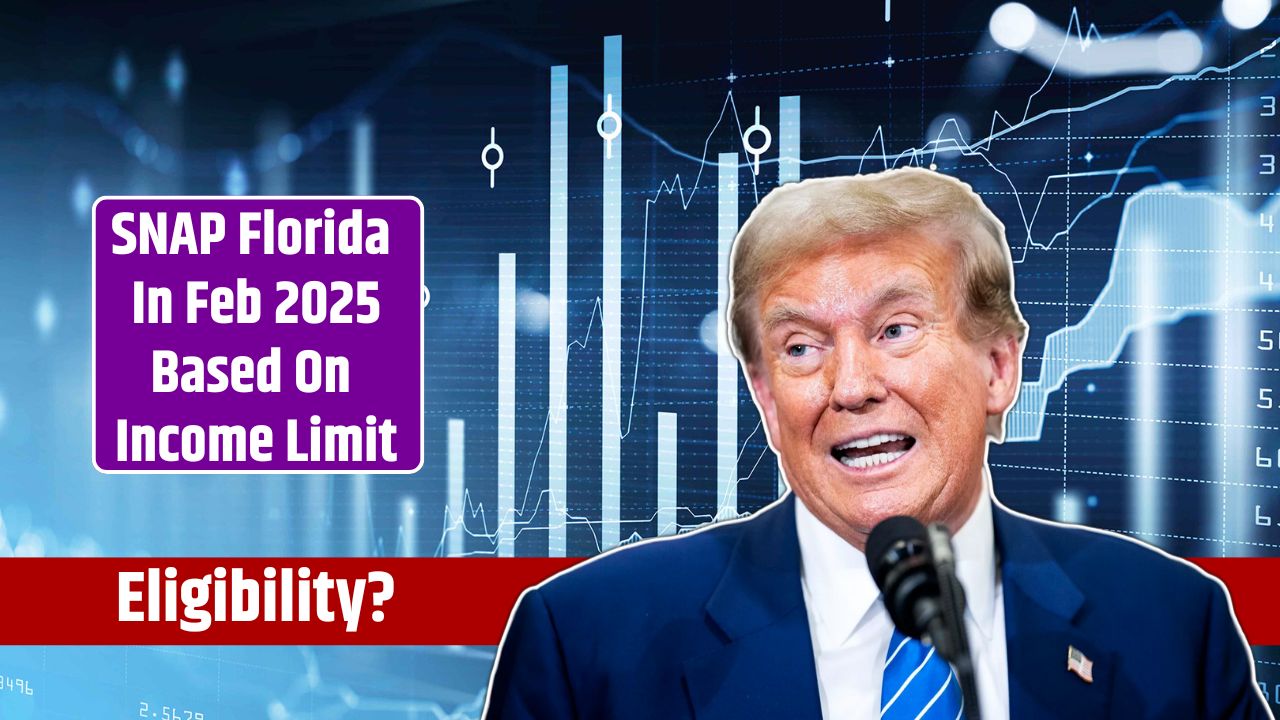The Supplemental Nutrition Assistance Program (SNAP) is a crucial lifeline for millions of Americans, including thousands of low-income households in Florida.
Previously known as food stamps, this federally funded program helps individuals and families afford nutritious meals each month.
In Florida, SNAP benefits are managed by the Department of Children and Families (DCF) and distributed through Electronic Benefits Transfer (EBT) cards.
If you are a SNAP recipient in Florida, understanding eligibility, payment schedules, and benefit usage is essential to making the most of your assistance.
Who Qualifies for SNAP in Florida?
To receive SNAP benefits in Florida, applicants must meet income and resource limits based on household size. The DCF reviews applications to ensure assistance reaches those who need it most.
Once approved, recipients receive an EBT card, which functions like a debit card for purchasing eligible food items.
Income Eligibility Guidelines
Households must meet gross and net income limits set by the United States Department of Agriculture (USDA). These limits vary based on family size and monthly income.
| Household Size | Maximum Gross Monthly Income (130% of Federal Poverty Level) | Maximum Net Monthly Income (100% of Federal Poverty Level) |
|---|---|---|
| 1 | $1,580 | $1,215 |
| 2 | $2,137 | $1,644 |
| 3 | $2,694 | $2,072 |
| 4 | $3,250 | $2,500 |
| Each Additional Member | + $557 | + $428 |
Note: Households with elderly or disabled members may qualify with higher income limits.
How Can You Use SNAP Benefits?
SNAP benefits help families purchase essential food items, ensuring access to nutritious meals. However, there are restrictions on what can and cannot be bought.
What You Can Buy with SNAP
Fruits and vegetables
Meat, poultry, and fish
Dairy products
Bread and cereals
Seeds and plants to grow food
What You CANNOT Buy with SNAP
Alcohol or tobacco
Hot, prepared foods (such as fast food or restaurant meals)
Non-food items (soap, paper products, household supplies)
Pet food, vitamins, or supplements
Violating these rules can result in penalties, including suspension of benefits. Always use your EBT card only for eligible purchases.
Florida SNAP Payment Schedule – February 2025
Florida distributes SNAP payments monthly, following a schedule based on the recipient’s case number. Payments are issued over several days to ensure system efficiency and avoid delays.
For February 2025, SNAP payments will be made according to the following schedule:
Florida SNAP Payment Dates (February 16-22, 2025)
| Case Number Range | Payment Date |
|---|---|
| 54-57 | February 16 |
| 58-60 | February 17 |
| 61-64 | February 18 |
| 65-67 | February 19 |
| 68-71 | February 20 |
| 72-74 | February 21 |
| 75-78 | February 22 |
How to Check Your SNAP Balance
Recipients should regularly check their EBT card balance to ensure their payment has been deposited. You can check your balance by:
- Logging into your EBT account online.
- Calling the EBT customer service number on the back of your card.
- Checking your receipt after a purchase.
The amount you receive depends on household size, income level, and deductions such as rent, utilities, and childcare expenses.
Why SNAP Benefits Matter
SNAP does more than just provide food—it reduces food insecurity, improves nutrition, and supports low-income families during tough economic times.
Key Benefits of SNAP
Helps families buy nutritious food.
Reduces hunger and malnutrition.
Boosts local economies by increasing food purchases.
Supports children, seniors, and disabled individuals.
For thousands of Florida residents, SNAP benefits are essential in ensuring they can afford meals while covering other living expenses.
As payments continue through February 2025, eligible families can rest assured that their benefits are on the way, helping them maintain stability and well-being.










